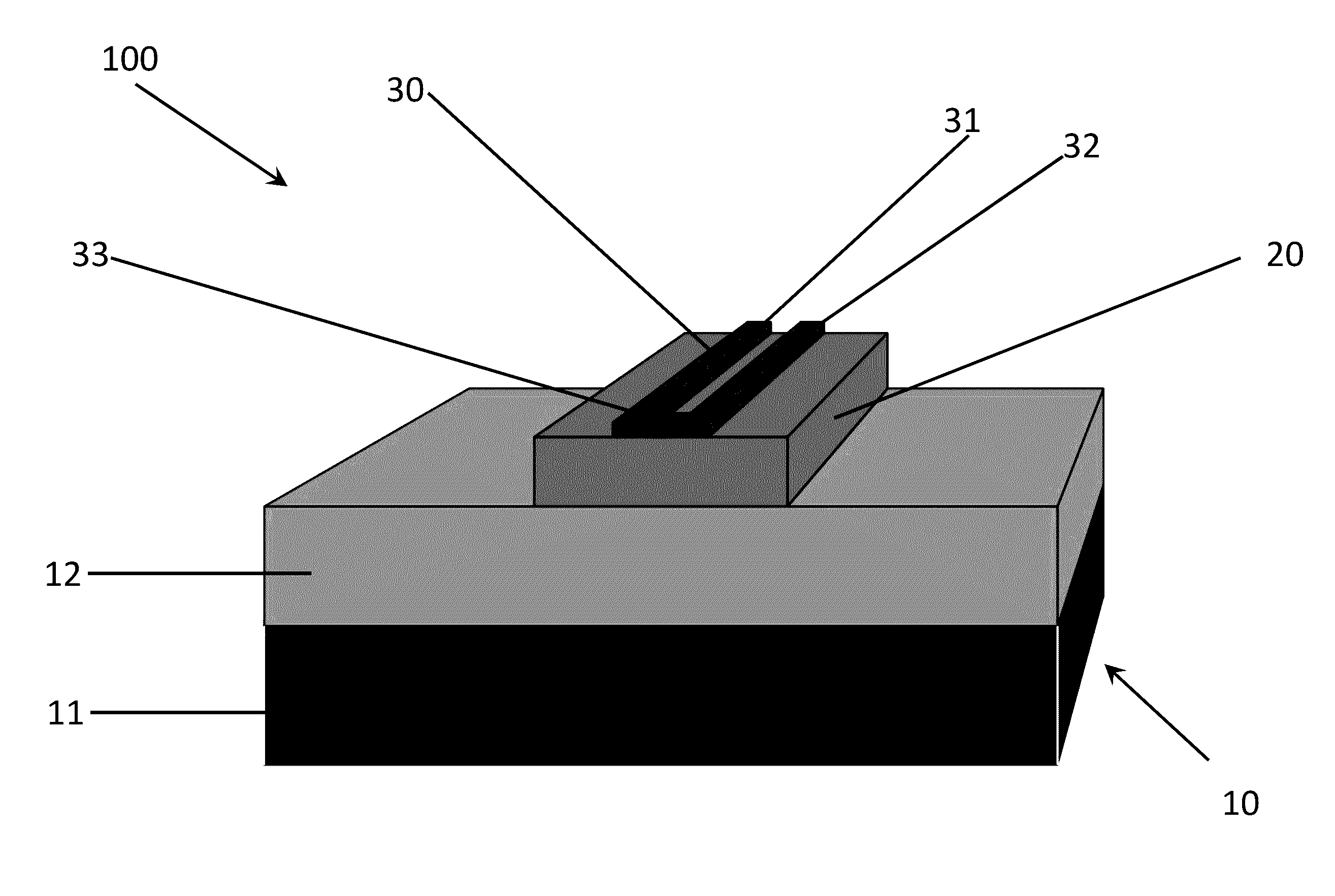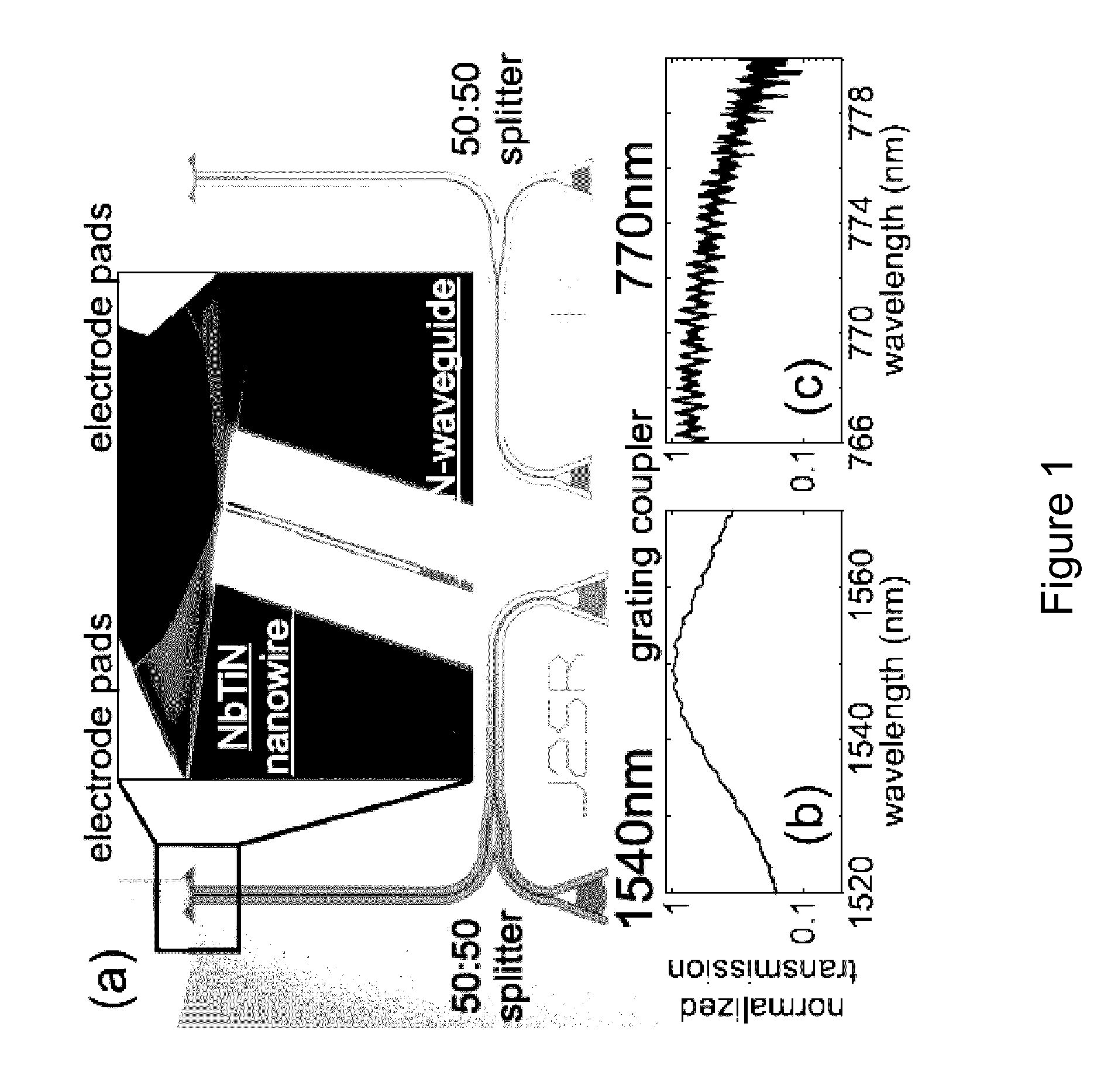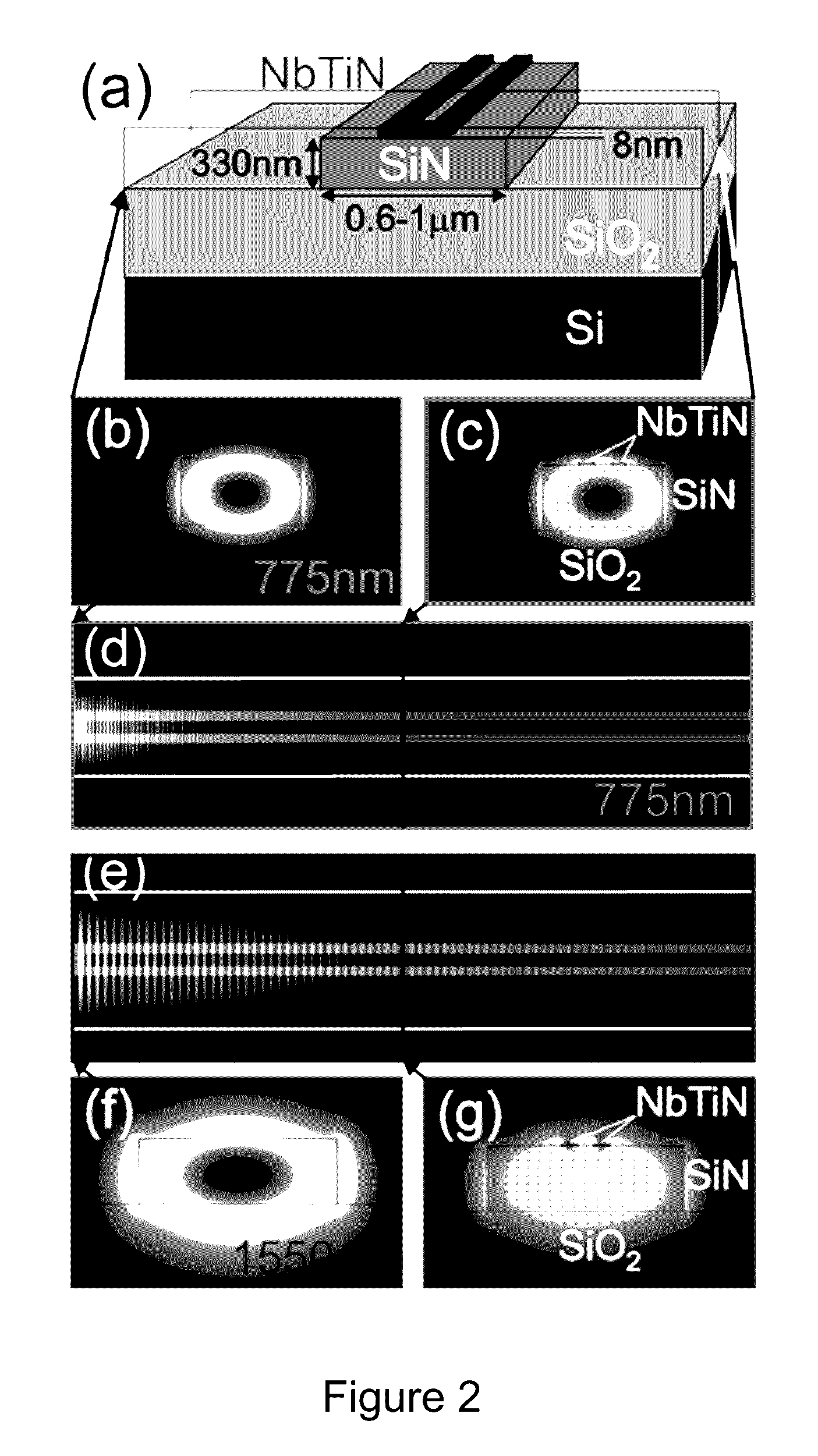Superconducting single photon detector
a single-photon detector and superconducting technology, applied in the direction of photometry using electric radiation detectors, optical radiation measurement, instruments, etc., can solve the problems of imperfect detector characteristics, limited rate and range of quantum key distribution implementations, 145-195), and limit the usefulness of large-scale integrated photon counting applications
- Summary
- Abstract
- Description
- Claims
- Application Information
AI Technical Summary
Benefits of technology
Problems solved by technology
Method used
Image
Examples
experimental examples
[0077]The invention is further described in detail by reference to the following experimental examples. These examples are provided for purposes of illustration only, and are not intended to be limiting unless otherwise specified. Thus, the invention should in no way be construed as being limited to the following examples, but rather, should be construed to encompass any and all variations which become evident as a result of the teaching provided herein.
[0078]Without further description, it is believed that one of ordinary skill in the art can, using the preceding description and the following illustrative examples, make and utilize the present invention and practice the claimed methods. The following working examples therefore, specifically point out the preferred embodiments of the present invention, and are not to be construed as limiting in any way the remainder of the disclosure.
example 1
NbTiN Superconducting Nanowire Detectors for Visible and Telecom Wavelengths Single Photon Counting on Si3N4 Photonic Circuits
[0079]Described herein is the demonstration of niobium titanium nitride (NbTiN) superconducting nanowires patterned on stoichiometric silicon nitride waveguides for detecting visible and infrared photons. The use of silicon nitride on insulator on silicon substrates allows for the simultaneously realization of photonic circuits for visible and infrared light and the integration of such circuits with nanowire detectors directly on-chip. By implementing a traveling wave detector geometry in this material platform, efficient single photon detection is achieved for both wavelength regimes. The waveguide coupled SSPDs presented here is a development primarily addressing the needs of integrated photonics and quantum information processing (Pernice et al., 2012, Nat. Commun., 3: 1325; Sprengers et al., 2011, Appl. Phys. Lett., 99: 181110). The described detectors ar...
example 2
Waveguide Integrated Low Noise NbTiN Nanowire Single-photon Detectors with Milli-Hz Dark Count Rate
[0090]Superconducting nanowire single-photon detectors are an ideal match for integrated quantum photonic circuits due to their high detection efficiency for telecom wavelength photons. Quantum optical technology also requires single-photon detection with low dark count rate and high timing accuracy. Presented herein are very low noise superconducting nanowire single-photon detectors based on NbTiN thin films patterned directly on top of Si3N4 waveguides. A large variety of detector designs are systematically investigated and their detection noise performance is characterized. Milli-Hz dark count rates are demonstrated over the entire operating range of the nanowire detectors which also feature low timing jitter. The ultra-low dark count rate, in combination with the high detection efficiency inherent to the travelling wave detector geometry, gives rise to a measured noise equivalent p...
PUM
 Login to View More
Login to View More Abstract
Description
Claims
Application Information
 Login to View More
Login to View More - R&D
- Intellectual Property
- Life Sciences
- Materials
- Tech Scout
- Unparalleled Data Quality
- Higher Quality Content
- 60% Fewer Hallucinations
Browse by: Latest US Patents, China's latest patents, Technical Efficacy Thesaurus, Application Domain, Technology Topic, Popular Technical Reports.
© 2025 PatSnap. All rights reserved.Legal|Privacy policy|Modern Slavery Act Transparency Statement|Sitemap|About US| Contact US: help@patsnap.com



